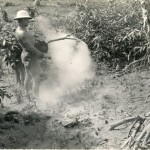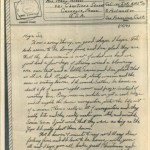SciTech Tuesday: The Legacy of DDT
DDT, or dichloro-diphenyl-trichlorethane, was developed as the first modern synthetic insecticide in the early 1940s. It was used successfully during WWII to control infectious diseases such as malaria and typhus among troops and civilians. Along with preventative measures such as mosquito nets and quinine treatments, DDT was particularly useful in combating malaria by limiting Anopheles mosquito populations in the South Pacific Theatre. Following the war, domestic production and use of DDT in agriculture increased dramatically.
This week marks the 50th anniversary of the publication of Rachel Carson’s Silent Spring. Her book presented a stark view of human influence on nature through the indiscriminate application of synthetic pesticides, including DDT. A suspected carcinogen, DDT causes the thinning of the egg shells of many bird species, including birds of prey, waterfowl, and song birds. Since 1972, when the DDT use was restricted in the US, bald eagle populations have rebounded significantly, even being removed from the endangered species list in 2007. Although DDT is credited with saving thousands lives by preventing widespread infectious disease during WWII, concerns for both human health and environmental effects have led to a limited international ban of the insecticide.
- A Seabee sprays greenery with DDT. Tubabao, Samar, Philippines, 1945. Gift of James L. Dale, 2003.283.083.
- V-Mail from service member describes warm weather and mosquito bites. 5 January 1943. Gift of Frances R. Alessi, 2010.014.004.
- Rachel Carson testifies before Congress in 1963. Associated Press.
Sign up for our monthly Calling All Teachers eNewsletter
Post by Annie Tête, STEM Education Coordinator at The National WWII Museum.





